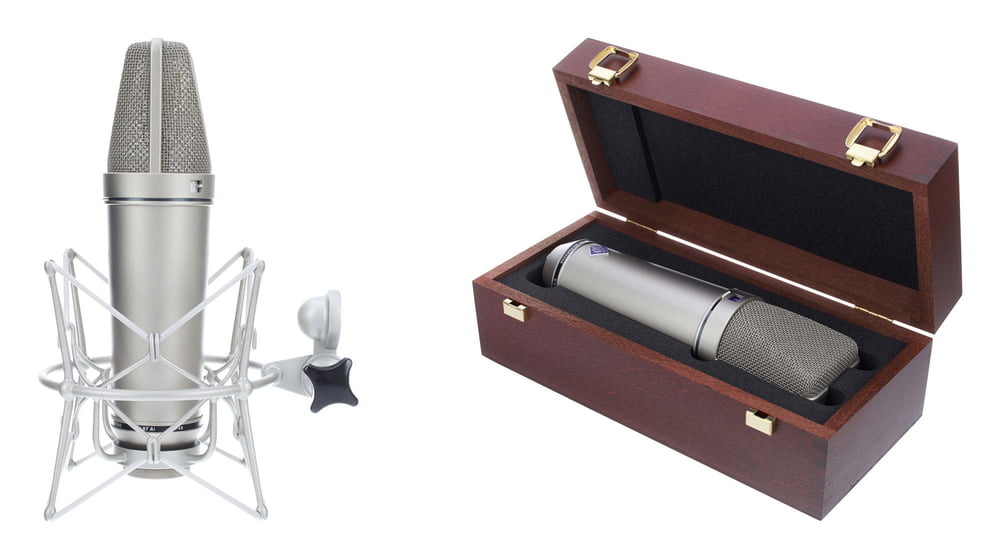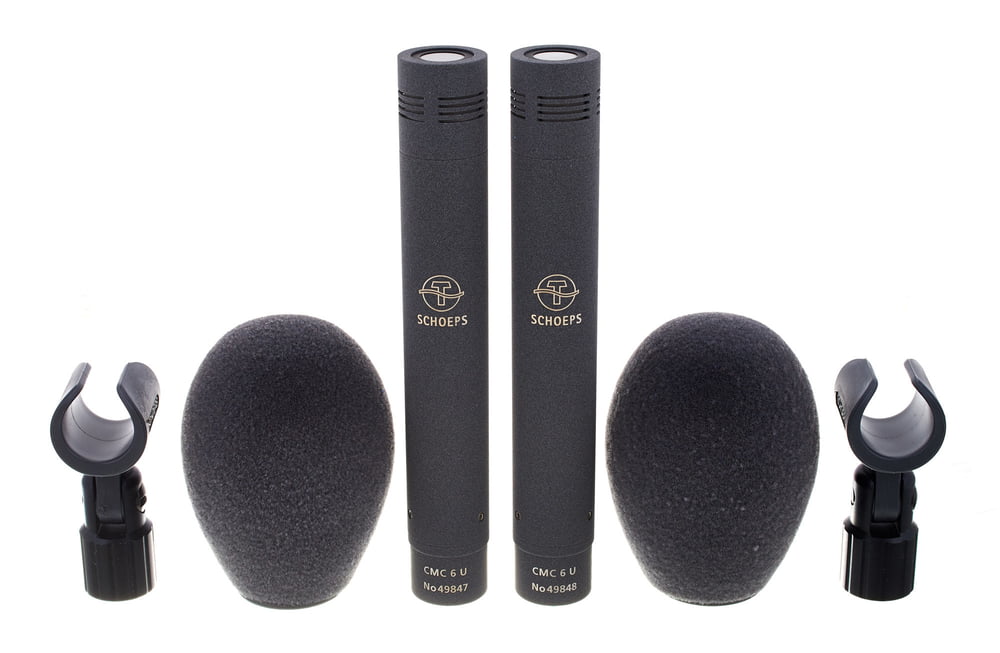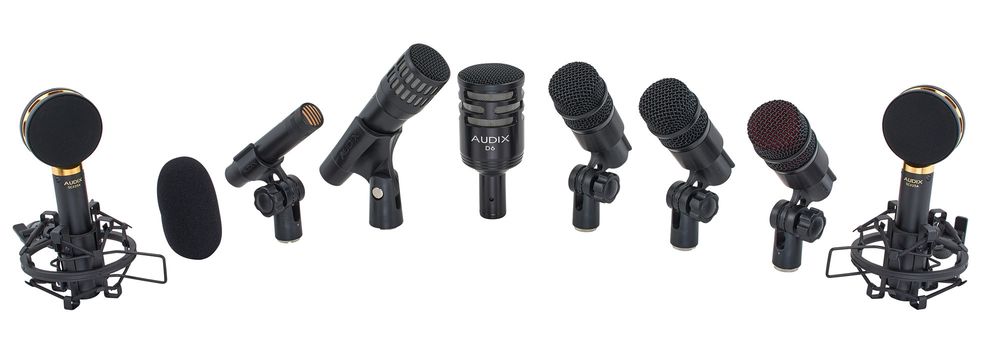7. Microphones
Large-diaphragm condenser mics
If you want to record vocals or instruments, you will need at least one mic in your recording studio. The typical studio mic will be a large-diaphragm condenser mic. It is preferred the preferred device to record speech and singing, but it serves just as well to record instruments such as guitars, violins or sax.

Large-diaphragm condenser mic
Large-diaphragm condenser mics are available in all price ranges these days; you'll find models from as little as €50.00 to far more then €10,000.00! We suggest you don't go for the very cheapest models; it's best even for beginners to invest in a medium-priced mic, and fantastic-sounding mics are available in the €150 - €500 price range. With cheaper models, you'll find you have to compromise on sound quality: inherent noise is a particular problem.
The standard sound characteristic is cardioid, which attenuates sound from the rear completely and side noise somewhat. This characteristic is a suitable choice for most studio situations. If you are open to experimentation, or if you want to use special recording techniques, such as SM recording, a mic with switchable characteristics may be worth investing in for you. Such mics usually come with omnidirectional, bidirectional and cardioid characteristics. Some more boutique models also offer intermediate stages (subcardioid, supercardioid, and hypercardioid).
Small-diaphragm condenser mics
Small-diaphragm condenser mics are specifically intended to record acoustic instruments. This type of mic records sound more neutrally and is intended to be placed at a greater distance from the source of sound. Large-diaphragm mics are constructed for recording from extremely close proximity; if placed further away from the sound, the resulting recording is disappointingly thin, especially in the bass range. Conversely, small-diaphragm mics may distort bass sound due to the proximity effect. Thus, such mics are often not best suited for song and speech recording. Larger distances from the instrument make sense for a lot of acoustic instruments, by the way, since the full range of their sound can only be appreciated from some distance in any case. Recording from close proximity often renders the sound "unnatural."
If you want to record instruments with extended sound boards specifically, you should go for a pair of small-diaphragm condenser mics, as stereo recordings of such instruments always sound greatly superior to mono recordings.

Small-diaphragm condenser mics
One more thing: The mics recommended so far - be they large-diaphragm or small-diaphragm - are condenser mics. This type of microphone is operated on voltage supplied as phantom power from the mic pre-amp. Usually, it is +48V.
Dynamic microphones
For especially loud instruments, such as drum sets or electric guitars played at high volume, and for some brass instruments as well, condenser mics may be too sensitive in some circumstances. Fur such instruments, dynamic microphones might be a more suitable choice. For recording drum sets in particular, manufacturers offer entire pre-selected sets especially for the purpose.

Audix drum recording mic set





